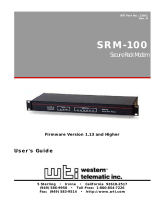
x
2–16 Lfu Command.......................................................................................2-28
2–17 Crash Command ..................................................................................2-30
2–18 Setting and Showing Environment Variables......................................2-32
2–19 Creating a User-Defined Environment Variable .................................2-32
2–20 Deposit Command................................................................................2-33
2–21 Examine Command..............................................................................2-33
2–22 More Command....................................................................................2-34
2–23 Initialize Command..............................................................................2-35
2–24 Help Command ....................................................................................2-36
2–25 Switching to the AlphaBIOS Console ..................................................2-37
2–26 Changing Baud Rate ............................................................................2-43
4–1 Dial-In Configuration...........................................................................4-12
4–2 Dial-Out Alert Configuration...............................................................4-14
Figures
1–1 Check Power Setting..............................................................................1-2
1–2 Location of Control Panel and On/Off Button........................................1-3
1–3 Physical Numbering for PCI Slots .........................................................1-4
1–4 AlphaBIOS Boot Screen .......................................................................1-20
1–5 Installing Windows NT ........................................................................1-22
1–6 Starting LFU from the AlphaBIOS Console .......................................1-26
1–7 System Partition Not Defined..............................................................1-47
1–8 Halt/Reset Button ................................................................................1-48
1–9 Halt/Reset Jumper ...............................................................................1-49
3–1 Boot Screen ............................................................................................3-2
3–2 AlphaBIOS Setup Screen.......................................................................3-3
3–3 Typical First-Level Help Screen ............................................................3-4
3–4 Second-Level Help Screen......................................................................3-5
3–5 Display System Configuration Screen ...................................................3-6
3–6 System Board Configuration..................................................................3-8
3–7 Hard Disk Configuration .....................................................................3-10
3–8 PCI Configuration ................................................................................3-12
3–9 PCI Slots ..............................................................................................3-13
3–10 Advanced PCI Information ..................................................................3-14
3–11 SCSI Configuration ..............................................................................3-15
3–12 Memory Configuration .........................................................................3-17
3–13 Integrated Peripherals.........................................................................3-18
3–14 Updating Firmware .............................................................................3-19
3–15 Hard Disk Setup Screen.......................................................................3-21
3–16 Create New Partition Dialog Box.........................................................3-24





















